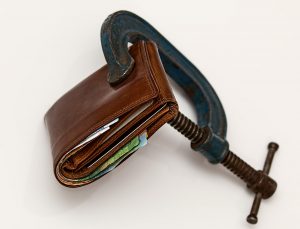Why you need to adjust your tax withholding now
Withholding taxes from your paycheck correctly can be a tricky process – if you withhold too little, you receive a bill at the end of tax season (one that, statistically, only 40% of Americans can afford to pay). If you withhold too much, you get a refund after you submit your taxes in April. Sure, many of us enjoy having a refund come every spring, but the reality is that you overpaid the government and gave them an interest-free loan, while you could have used that money yourself throughout the year. In fact, you’d see a better return on investment by letting that money sit in a high-yielding certificate of deposit or savings account.
As you may know, the IRS waived withholding penalties for those whose withholding and estimated payments were at least 80 percent of their tax liability for the most recent tax year due to the significant tax law changes taking effect. For tax years prior to 2018, the penalty was enforced if you paid less than 90 percent of your tax liability, and experts expect the penalties to be enforced at the 90 percent level for 2019 and future years. This means you could face an underpayment penalty in addition to receiving a tax bill at the end of the next tax season. The IRS is also planning to make the W-4 more precise next year, with many more details to be included on a much longer form. If this form is used next year, that means there will be fewer refunds and fewer bills, meaning tax withholding will be much more accurate.
[Related: A Comprehensive Guide to the Top 8 Provisions of the Tax Cuts and Jobs Act]
The IRS is taking steps to making tax withholding as accurate as possible, eliminating the huge amount of tax bills or tax refunds sent out every year. If you’ve received a large refund or a tax bill in the past, adjusting the withholding on your W-4 now is in your best interest.
Do your Paycheck Checkup Now
If you owe a tax bill:
The best strategy is to pay taxes as you earn the money. Not many Americans like to save money for bills, especially bills with an unpredictable total. Start by decreasing the number of personal allowances on your W-4, so that additional taxes are taken out of your paycheck as you earn the income. Use this tool to estimate how much you should withhold from each paycheck.
If you’re used to large refunds:
Increase the amount of personal allowances on your W-4 so that fewer taxes are taken out of each paycheck. Now, you’ll have more money in each paycheck! We recommend saving this money into an account that earns you some interest instead of just spending it. An emergency savings account of at least $1,000 is highly recommended by most tax experts for unanticipated bills and expenses.
Adjust your Withholding After any Life Changes
There are more life changes that warrant a change in tax withholding than you may know: getting married, having a child, or buying a new home are the most common. To best maximize any tax exemptions you may not know about and to keep your tax withholding as accurate as possible, consult a tax expert now.
Calculating estimated tax payments and/or withholding becomes more complicated if you’re self-employed or manage a business with several employees. If you haven’t adjusted your tax withholding or estimated payments for your business income or aren’t sure how to help your new hires navigate the W-4, send us a message. Our on-site bookkeepers and payroll experts can help you navigate the withholding process now, so you are set up for success long before taxes are due.


Recent Comments